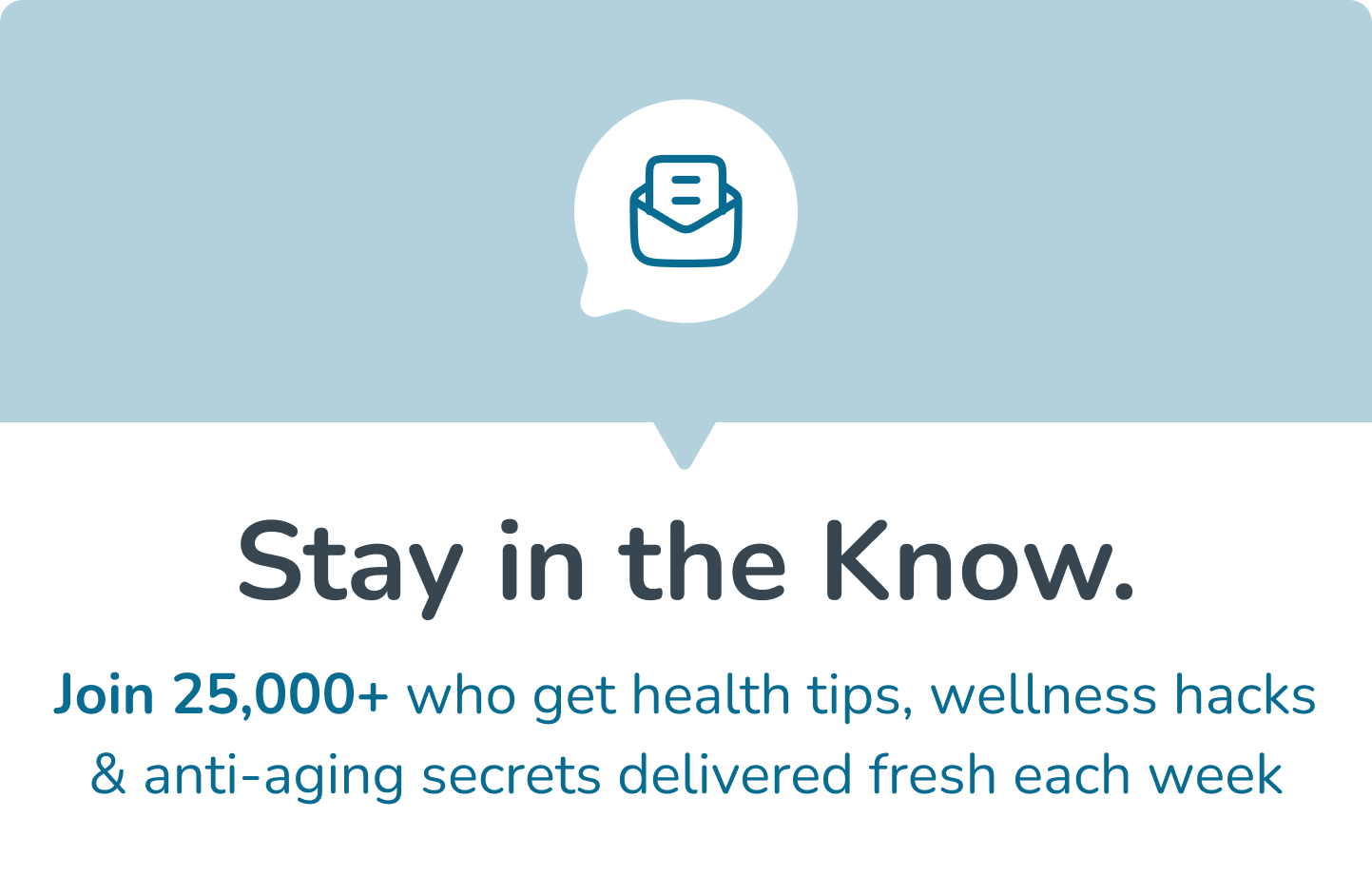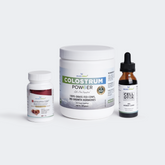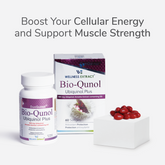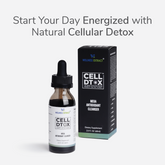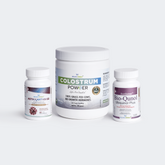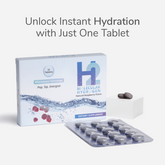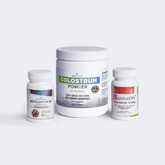Estimated Reading Time: 10 minutes
|That scented candle on your desk. The water you just sipped from. Your anti-fall shampoo, which promises you shiny and stronger hair. And even that non-stick pan in your kitchen.
They look harmless.
But these everyday essentials are quietly disturbing your natural hormonal balance. Almost everything around you contains invisible chemicals (called endocrine disruptors) that mess with your thyroid, fertility, weight, and even your mood.
Sounds complicated? Let's make it simpler for you.
A Quick Intro on Your Endocrine System
Let's build it from the basics. Do you remember your biology class telling you about a network of hormones and glands run our bodies? That's the endocrine system. This system releases about 50+ hormones directly into the bloodstream, which act as secret messengers, controlling your:
-
Sleep/wake cycle (circadian rhythm)
-
Growth
-
Weight
-
Mood
-
Sexual development
-
Fertility (even libido)
Here's the science. These hormones work in precise, delicate amounts. Which means even the smallest hormonal imbalance can cause significant trouble.
What Exactly Are Endocrine Disruptors?
Okay, here comes the hero section of this blog: endocrine disruptors. These are impersonators of your natural endocrine hormones. Yes, disruptors are chemicals that trick your body into thinking they're a real hormone. That's how they modulate the signals your glands are trying to send or even block them.
How Endocrine Disruptors Work
Endocrine disruptors are literally all around you. They sneak into your body through the food you eat, the air you breathe, and even the lotion you rub on your skin. Here are the common ways they attack your endocrine system:
-
By interfering with gene-regulating receptors in the cell nucleus. Results? Your cells start making too much or too little of certain proteins and hormones.
-
Damage receptors outside the nucleus. Results? Influences cellular signalling pathways.
-
Interfering with enzymes involved in hormone synthesis. Results? Slow down hormone production.
-
Alter/speed up the metabolism and excretion of the hormones. Results? Lead to a hormone imbalance.

You know what's scarier? Even tiny, repeated exposure to these chemicals can throw your hormones into chaos. Now, let's learn about such common toxins.
Common Endocrine Disruptors Threatening You Every Day
Think there are only a handful of harmful chemicals around you? Well, the truth is scarier. There are nearly 85k+ human-made chemicals. Out of which, more than 1000 could be endocrine disruptors, including:
-
BPA: The Plastic Leacher
BPA or Bisphenol A is a chemical compound used to make polycarbonate plastic and epoxy resins. These plastics and resins make food and beverage packaging materials. But when exposed to heat or acid, BPA can leach from packaging to edibles.
Why they harmful
-
Mimic estrogen
-
Affect weight and metabolism
-
Disrupt menstruation in women (can contribute to heavier or painful periods)
-
May cause fertility problems (in both men and women)
BPA Culprits Around You
-
Canned food linings
-
Plastic water bottles
-
Plastic toys
-
Food and drinks packaging
The fact might surprise you, but almost 90% of Americans have detectable levels of BPA in their bodies. What’s worse? Overexposure to BPA may cause cancer or diabetes.
-
Atrazine: The Crop Sprayer in Your Food
Atrazine is one of the world's most commonly applied herbicides, especially on corn, sorghum, and sugarcane. It works by inhibiting photosynthesis in plants, therefore killing weeds.
Why they harmful
-
Can increase hormone production in the pituitary and Leydig cells (cells that are responsible for the production and secretion of testosterone).
-
Affect estrogen and testosterone levels.
-
Interfere with normal cellular functioning
Atrazine Culprits Around You
-
Contaminated soil and water
-
Residue on non-organic grains and crops
So, it's not just plastics hiding endocrine disruptors, but also your green vegetables and grains posing threats.
-
Phthalates: The Plasticizers in Your Shampoo
Phthalates, made up of phthalic acid esters, are used in plastics to increase their flexibility and durability.
Why they harmful
-
Mimic estrogen
-
Disrupt testosterone levels
-
May cause fertility problems (in both men and women)
Phthalates Culprits Around You
-
Cosmetics (nail polish, hair sprays, scented lotions, and shampoos)
-
Food packaging
-
Soft plastic toys
-
Perfumes and fragrances (If your bottle says fragrance, you need to put it down).
Moreover, it may include items you can’t think of like laundry soap and candles.
Wondering how your shampoo bottle can expose you to phthalates? It's because they don't bind permanently to the materials. Means they can migrate out of products (under heat or stress) and contaminate the surroundings.
Also Read: Does Your Air Contain Environmental Toxins that Can Potentially Increase Cancer Risk?
-
PBDEs: The Flame Retardants
As the heading told you already. PBDEs, or polybrominated diphenyl ethers, prevent or slow down the spread of fire. Though useful, this chemical is a serious threat to health and the environment.
Why they harmful
-
Interfere with the thyroid gland
-
Accumulate in the body, building toxins
-
Disrupt estrogen and androgen production
-
May reduce semen quality
-
Cause cognitive problems
PBDEs Culprits Around You
-
Furniture foam and old couches
-
Carpets and mattresses
-
Electronics for fire resistance
PBDEs are non-biodegradable and tend to accumulate in fatty tissues of living beings. Results? They are easily spread through the food chain.
-
PCBs: Banned But Still Existing Chemicals
Polychlorinated Biphenyls (PCBs) are a group of man-made chemicals that consist of hydrogen, carbon, and chlorine. Before they got banned in 1979, PCBs were popular in electrical appliances (because of their stability, non-flammability, and insulating properties).
Why they harmful
-
Affects the synthesis of estrogen and testosterone
-
Linked to cancer, thyroid, and cognitive decline
PCBs Culprits Around You
-
Old electrical equipment
-
Contaminated fish or soil
-
Hydraulic fluids
-
Lubricants
Also Read: Increase Brain Power in 7 Minutes: 5 Quick Techniques You Need to Try!
-
Perchlorate: The Rocket Fuel in Your Water
Perchlorate, better known as rocket fuel, is a strong oxidizing agent. It helps fuel combustion and produce enough thrust required for propulsion. However, it can sneak into your body through drinking water.
Why they harmful
-
Mimic the structure of iodide
-
Block iodine uptake by the thyroid gland
-
Linked to thyroid and neurodevelopmental issues
Perchlorate Culprits Around You
-
Fertilizers
-
Contaminated groundwater
-
Rocket propellant
-
Explosives and fireworks
-
Leafy vegetables (grown in affected soil)
Though perchlorate is a man-made chemical, it also exists naturally in mineral mines and the atmosphere.
-
Dioxins: The Toxic Byproduct
Dioxin is a highly toxic endocrine disruptor produced as a byproduct during the manufacturing of herbicides and paper bleaching. And guess how it is released into the environment? Through waste burning or forest wildfires.
Why they harmful
-
Interfere with hormonal signalling
-
Impact reproductive health (both men and women)
-
Linked to miscarriage and fertility issues
-
Reduce sperm counts
Dioxins Culprits Around You
-
The air you breathe
-
Fatty meals
-
Diary and fish
-
Other contaminated foods
Isn't this scary? Even your basic grilled cheese sandwich (made with non-organic dairy) can mess up your hormones without letting you know.
-
PFAS: The Forever Chemicals
PFAs or per- and polyfluoroalkyl substances are a large group of synthetic chemicals used across non-stick appliances and other industrial waterproofing applications.
Why they harmful
-
Alter thyroid and sex hormones
-
Can cause fertility issues and metabolic disorders
-
Linked to development issues and immune suppression
PFAS Culprits Around You
-
Non-stick pans and induction
-
Fast food wrappers
-
Waterproof jackets
-
Stain-resistant carpets
Read again, the subheading calls PFAS as 'forever chemicals'. Why so? Because they can literally take over 1000 years to break down.
Also Read: How To Lower Estrogen Levels In Females Naturally
-
Triclosan: The 'Ancient' Antimicrobial
Triclosan is a synthetic antibacterial and antifungal agent. It was once common in soaps, body washes, and some toothpastes.
Why they harmful
-
Interfere with thyroid hormone metabolism
-
Mimic some estrogenic hormones
-
Affects reproductive systems (testosterone production)
-
May fuel antibiotic resistance
-
Increase allergic reactions in kids
Triclosan Culprits Around You
-
Though rare, some personal care products still use Triclosan.
In 2016, the US Food and Drug Administration (FDA) banned Triclosan from over-the-counter antiseptic wash products like hand and body washes. However, it's still not completely banned in certain products like sanitizers.
Also Read: 15 Natural Ways to Lower Your Stress Hormone Aka Cortisol Levels!
11 Quick Ways to Avoid These Hormone-Disturbing Chemicals
Let's be real: it's impossible to eliminate exposure to endocrine disruptors completely. Reason? They are widespread, from the air you breathe to your non-stick cookware.
However, here are a few quick tips to significantly reduce the risks:
-
Wash your hands frequently (always before eating). Easy, right? But it can really make noticeable differences.
-
Avoid antibacterial and fragrance-filled handwashes (you already know why).
-
Maintain hygiene and cleanliness around you. Dust your household items with a damp cloth. For floors and carpets, use a vacuum with HEPA filters.
-
Skip plastics as much as possible (especially for storing edibles). Go for glass or steel cookware instead. Here’s a pro tip: Use stainless steel water bottles and cast iron cookware.
-
Add detoxifying supplements that naturally detoxify your cells every day and eliminate harmful toxins. You can consider:
Humic and Fulvic Acid Detoxification
Zeolite Cellular Detox
Regular detoxification (through aerobic exercise and sauna)
-
Avoid cosmetics, candles, or skin care with a 'fragrance' label. While choosing cosmetics, ensure that they are free from "fluoro" or "perfluoro" ingredients.
-
Choose safe cookware. Go for stainless steel or iron pleated, instead of non-stick utensils.
-
Go for organic fruits, vegetables, and whole grains whenever possible to avoid pesticide contamination. Also, wash your veggies before you cook.

-
Limit consumption of processed foods, alcohol, and smoking. It's best to incorporate hormone-friendly and anti-inflammatory foods to support your cellular health.
-
Use a certified filter instead of bottled drinking water, as it may contain microplastics.
-
Also, don't microwave or store your food in plastic.
See, that's small swaps and habits that can protect your hormonal balance in the long run.
The Bottom Line
Endocrine disruptors are almost everywhere, causing a serious threat to your hormones. But panic was never a solution. Be mindful of your habits and choices. Swap smartly, choose cleaner and safer options. Complement your lifestyle with relevant health supplements. Be consistent and see how your hormones will thank you one day!
Disclaimer: Work with a healthcare practitioner, such as a naturopathic doctor, to help choose supplements that are right for you. The material provided in this article is for purely educational and informational purposes and should not be used as a substitute for professional medical advice, diagnosis, or treatment. Always consult with your physician or other qualified healthcare provider with any questions regarding a medical condition.
Frequently Asked Questions (FAQs)
Q1. How to get rid of endocrine disruptors?
-
Limit your consumption of processed foods.
-
Stop eating food/drinking water in plastic containers.
-
Wash your hands and veggies well before eating.
Q2. What foods are hormone disruptors?
The common food sources that contain hormone disruptors are red meat, processed foods, non-organic foods, vegetables, caffeine, soy, and dairy products.
Q3. Do perfumes disrupt hormonal balance?
Yes, perfumes and synthetic fragrances contain endocrine disruptors like phthalates and parabens, which mess with your hormonal balance. So, if your perfumes say fragrance, put it down!
Q4. What everyday items contain endocrine disruptors?
Endocrine disruptors are present in different everyday items, including plastic bottles, non-stick cookware, toys, perfumes, cosmetics, food and beverage packaging, and pesticides.
Q5. Who's more vulnerable to endocrine disruptors?
Developing fetuses, infants, and children are more vulnerable to endocrine disruptors.
References
-
National Institute of Environmental Health Sciences (NIEHS). (2023). Endocrine Disruptors. Updated December 2023. Available: https://www.niehs.nih.gov/health/topics/agents/endocrine
-
Das, S., et al. (2023). Atrazine toxicity: The possible role of natural products for effective treatment. July 2023. Available: https://www.ncbi.nlm.nih.gov/pmc/articles/PMC10301673/
-
Wang, Y., et al. (2021). Phthalates and Their Impact on Human Health. May 2021. Available: https://www.ncbi.nlm.nih.gov/pmc/articles/PMC8157593/
-
Hoffman, K., et al. (2023). Do flame retardant chemicals increase the risk for thyroid dysregulation and cancer? March 2023. Available: https://www.ncbi.nlm.nih.gov/pmc/articles/PMC10037316/
-
U.S. Environmental Protection Agency (EPA). (2023). Learn about polychlorinated biphenyls (PCBs). Updated November 2023. Available: https://www.epa.gov/pcbs/learn-about-polychlorinated-biphenyls
-
Steinmaus, C. M. (2016). Perchlorate in water supplies: Sources, exposures, and health effects. June 2016. Available: https://www.ncbi.nlm.nih.gov/pmc/articles/PMC4834222/
-
World Health Organization (WHO). (2016). Dioxins and their effects on human health. Updated October 2016. Available: https://www.who.int/news-room/fact-sheets/detail/dioxins-and-their-effects-on-human-health
-
Peritore, A. F., et al. (2023). Current review of increasing animal health threat of per‑ and polyfluoroalkyl substances (PFAS): Harms, limitations, and alternatives to manage their toxicity. July 2023. Available: https://www.ncbi.nlm.nih.gov/pmc/articles/PMC10380748/
-
Marques, A. C., et al. (2022). Triclosan and its consequences on the reproductive, cardiovascular and thyroid levels. September 2022. Available: https://www.ncbi.nlm.nih.gov/pmc/articles/PMC9570035/



















